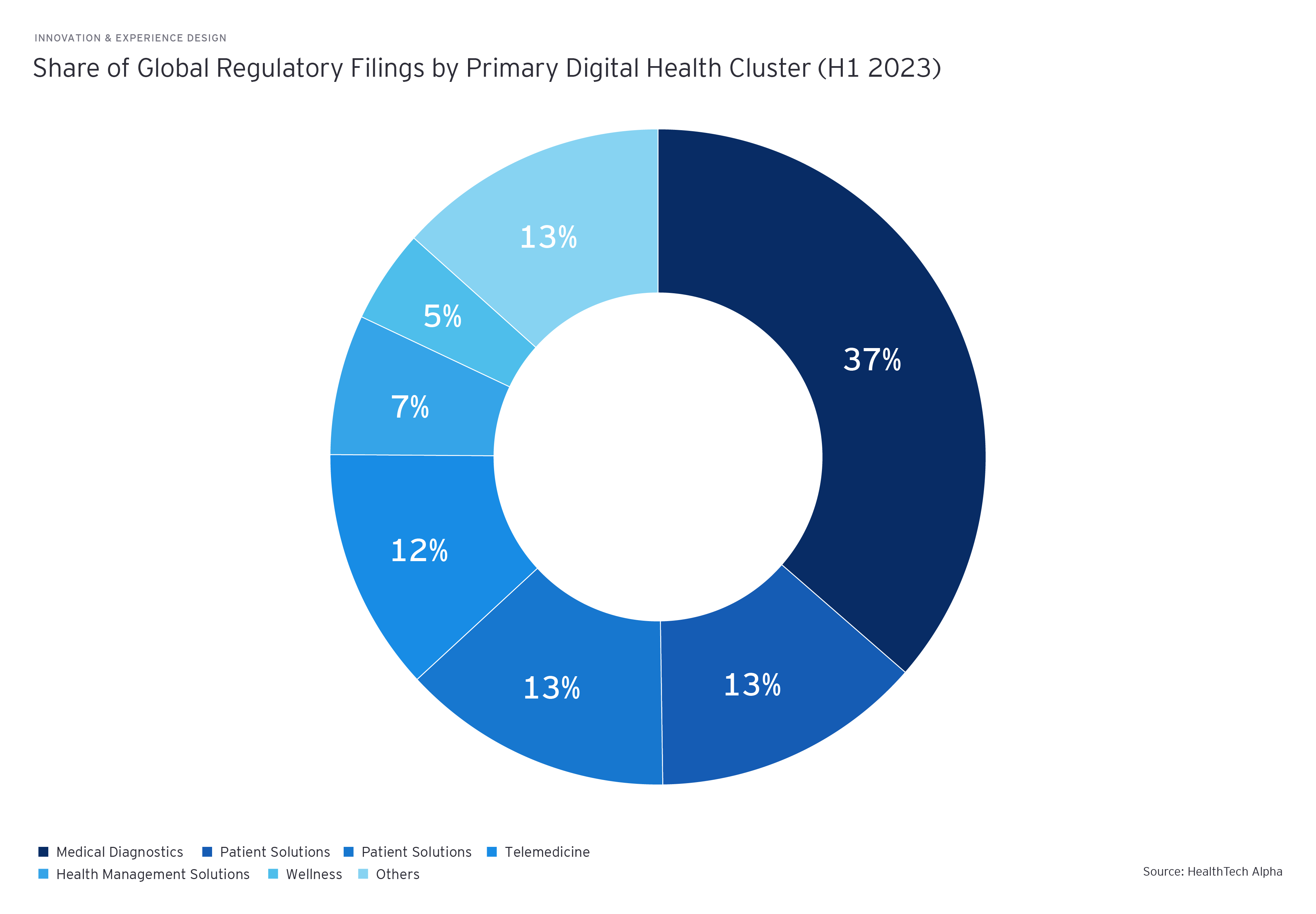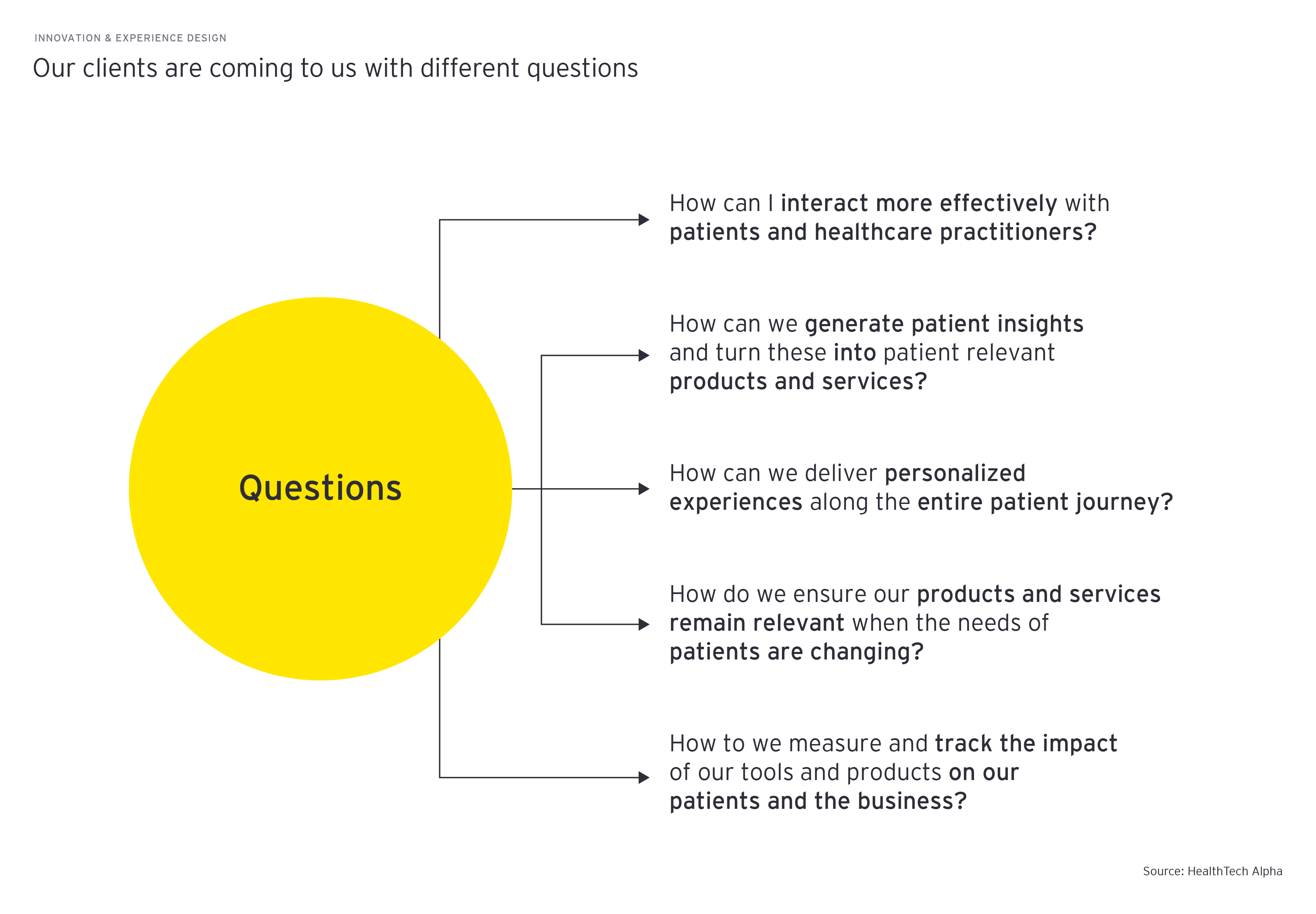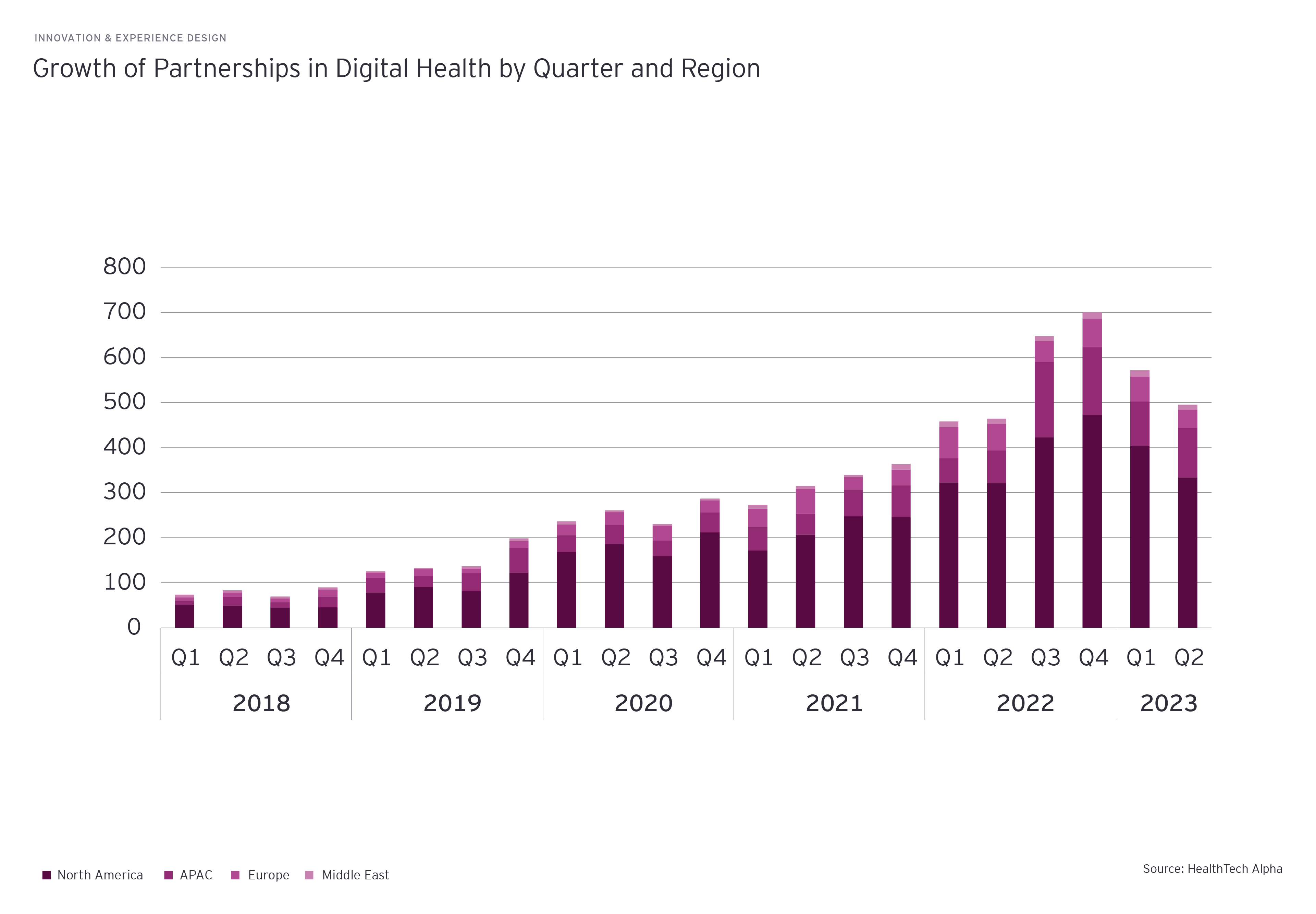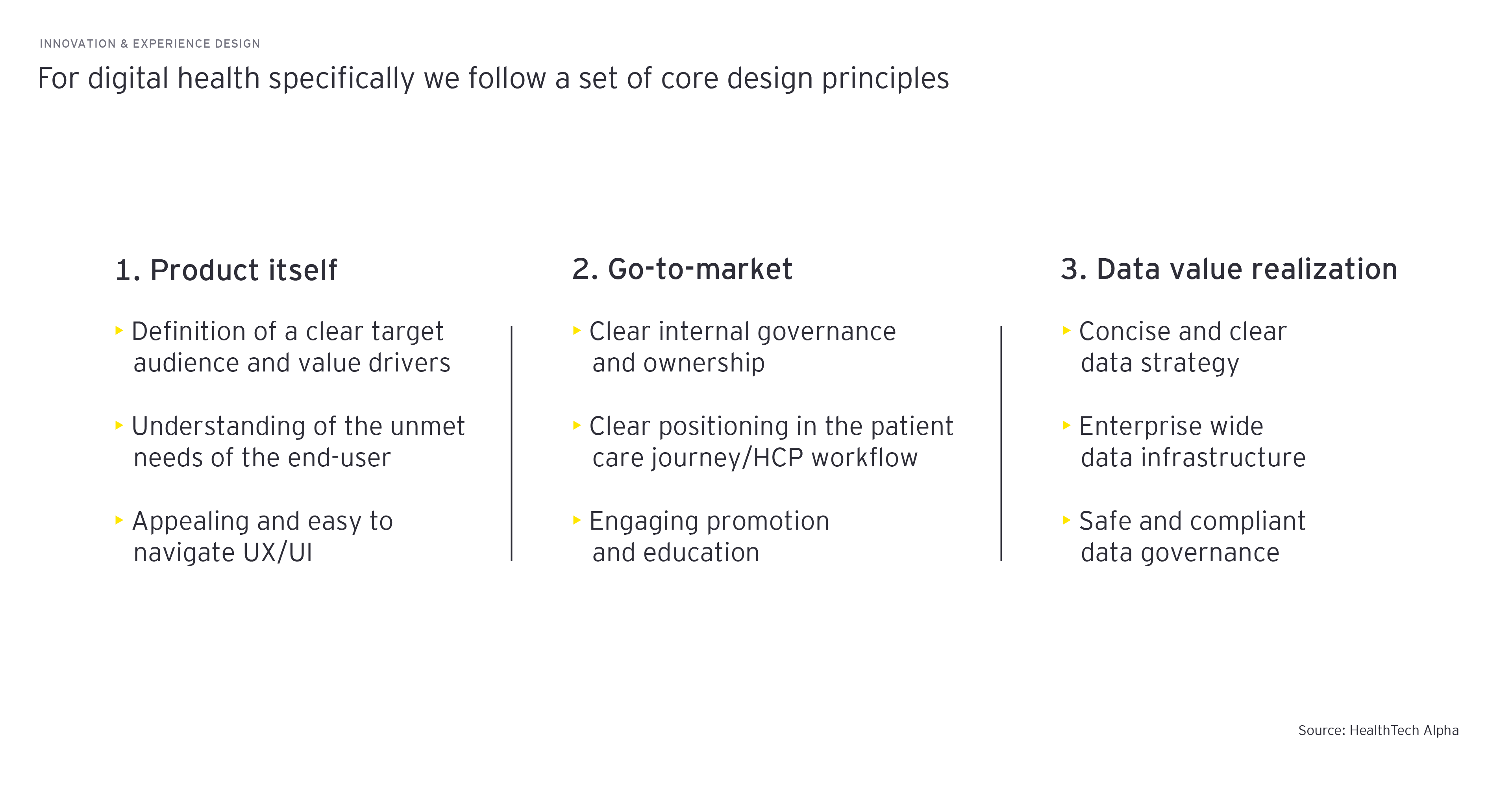EY refers to the global organization, and may refer to one or more, of the member firms of Ernst & Young Limited, each of which is a separate legal entity. Ernst & Young Limited is a Swiss company with registered seats in Switzerland providing services to clients in Switzerland.
Many commentators are quick to reassure us that the idealistic target visions of digital health, such as a fully connected and integrated healthcare network including a broad range of reimbursable digital therapeutics, is still very much alive. In fact, in their opinion Pear’s failure should be taken as an opportunity for learning and growth in the industry. But that requires us to understand and effectively mitigate the many challenges stifling innovation and long-term value in the sector.
The dilemmas the visionaries of a connected future are facing
Naturally, there is no one-size-fits-all solution for the wide diversity of products and services encompassing the facets of digital health. EY analysis and interviews with several industry leaders have demonstrated, though, that any organization active in the field (be it public or private) faces a surprisingly consistent set of challenges. While this list is non-exhaustive, it does contain some of the most significant aspects to consider internally (1&2), externally (3-5) or with the products themselves (6-7):
- Digital as a second priority, as digital products and services are often the first on the chopping block in times of financial cuts or restructuring, in both the private and the public sector, since they are often not considered part of the core business. This frequently results in stalled projects and skeleton crews working on half-baked solutions, further perpetuating negative perceptions of digital solutions within organizations such as pharmaceutical companies or government entities.
- A distinct lack of internal innovation or ability to execute and deliver on innovative ideas and impulses. At the same time, partnerships with startups and other smaller entities frequently lag behind in expectations, with the resulting friction further exacerbating the problems.
- The highly fractured state of the (digital) healthcare system: payers, hospitals, MedTech, governments, regulators, pharma & tech companies are all vying for a seat at the table when it comes to the leveraging of patient data, all with their own walled gardens and infrastructures.
- Regulatory pathways for digital therapeutics are still evolving and vary significantly across geographies, further delaying commercialization of products. But even as regulatory challenges are passed, next come the reimbursement ones, which are often almost as varied and complex.
- Patient data safety, privacy and ownership require special care and increase the challenge of interoperability between healthcare systems, which is further exacerbated by significant differences in regulations across geographies.
- Unclear, uneconomical, or unrealistic commercial models that do not deliver as revenue drivers. These issues can be caused by a wide variety of factors ranging from lack of a clear pathway to reimbursement, pricing or a lack of innovation when it comes to options for commercialization, partnerships, or funding via other value-based modes of financing.
- Solutions lacking quantifiable value-adds to end-users. Often, solutions lack scalability and many of them only demonstrate value in pilot project but fail to impress when scaling up. Again, the causes for this are varied but can include a misunderstanding of patient value propositions and drivers, underestimating patient learning curves and adoption behaviors or lack of adaptation to local markets.
Not every organization will face the totality of these challenges, but our experience has shown that they do significantly impact many clients and their stakeholders. In the case of Pear Therapeutics, common challenges contributing to the failure were the commercial and business models of Pear, namely, high prices acting as barriers for patients with insufficient insurance coverage, salesforces of partners not being sufficiently familiarized with how to sell digital therapeutics (compared to generics), and payers and providers not being convinced of the real-world outcomes / value to patients and their willingness to contribute to such solutions. Reasons for this are twofold. Firstly, many payers are still relatively unfamiliar with digital products and services and how to handle them. Secondly, there were also lingering concerns about the clinical evidence generated by Pear Therapeutics, primarily based on the settings in which studies were conducted and their transferability to the daily life of patients.
Notably, though, Pear Therapeutics also faced unique challenges due to its unicorn status. The unrealistic expectations from shareholders led to the company being over-valued and receiving extensive pressure as well as to frequent strategic changes. One thing can be said for sure though: there was no lack of innovation or idea generation at Pear, something that many established players can only wish for.











